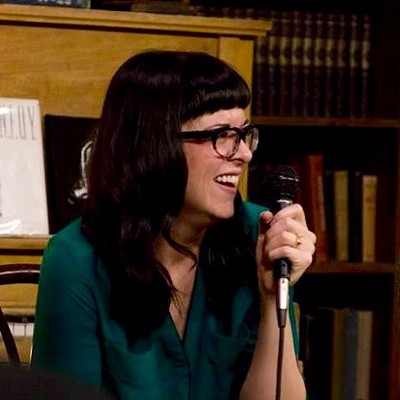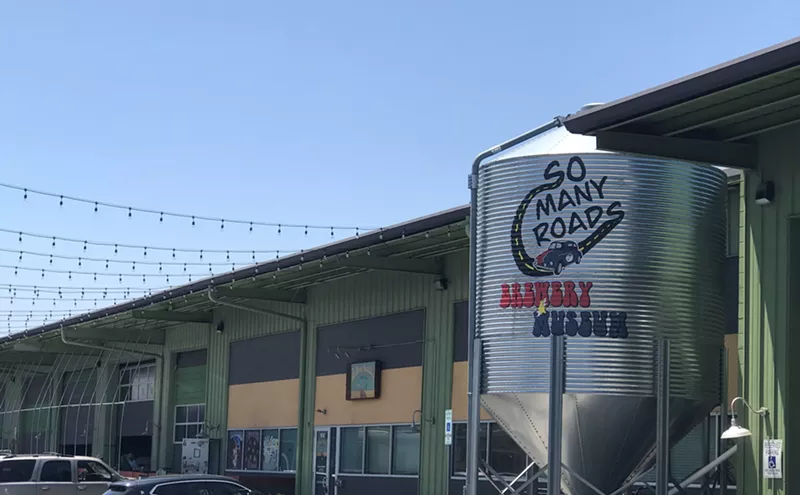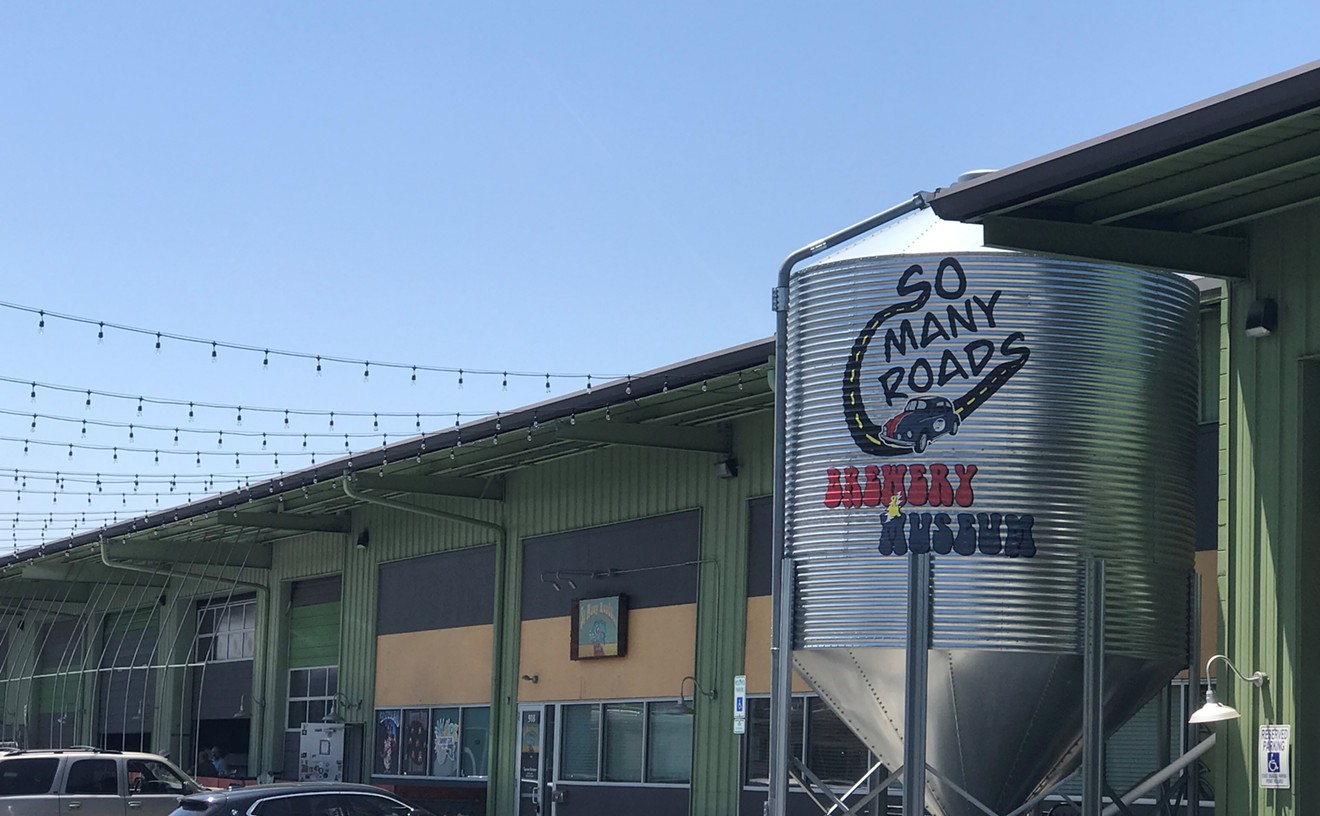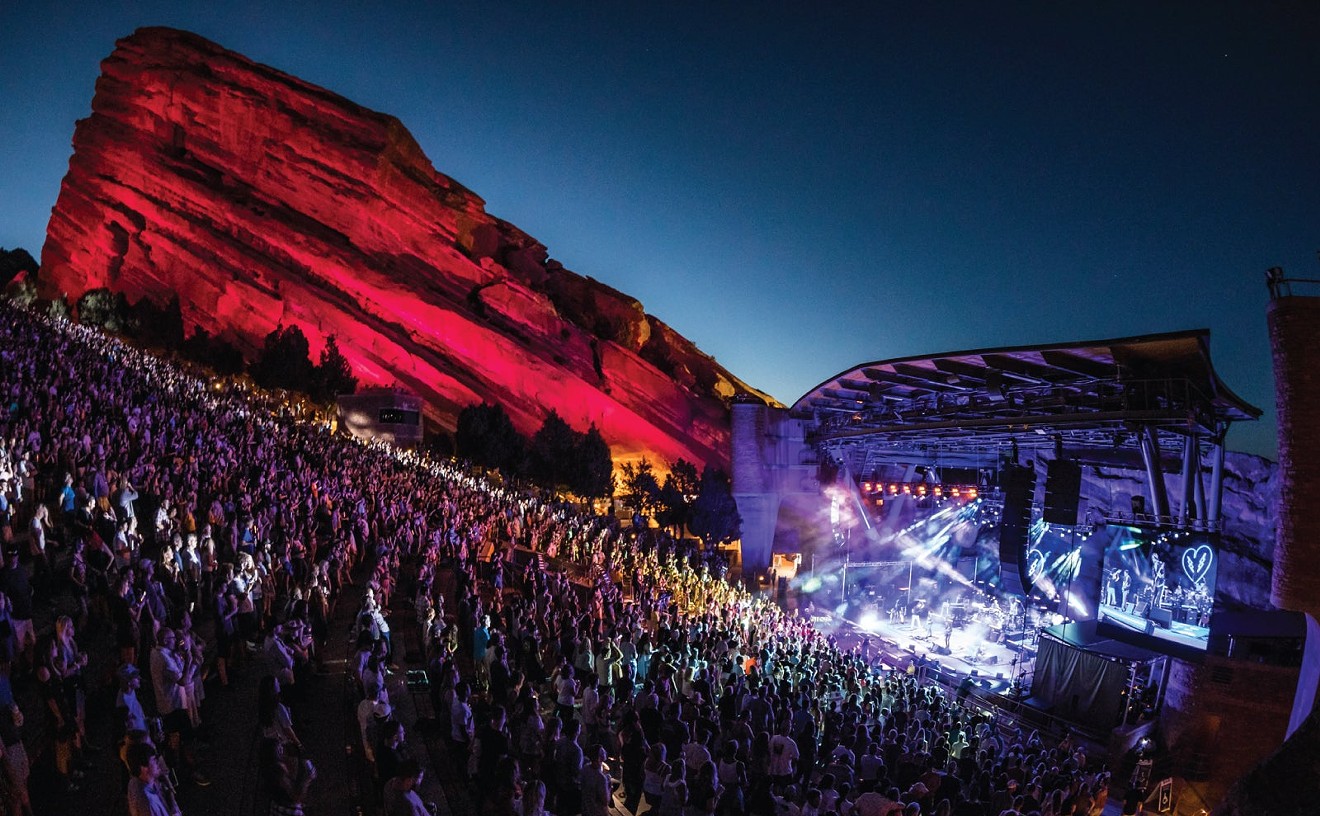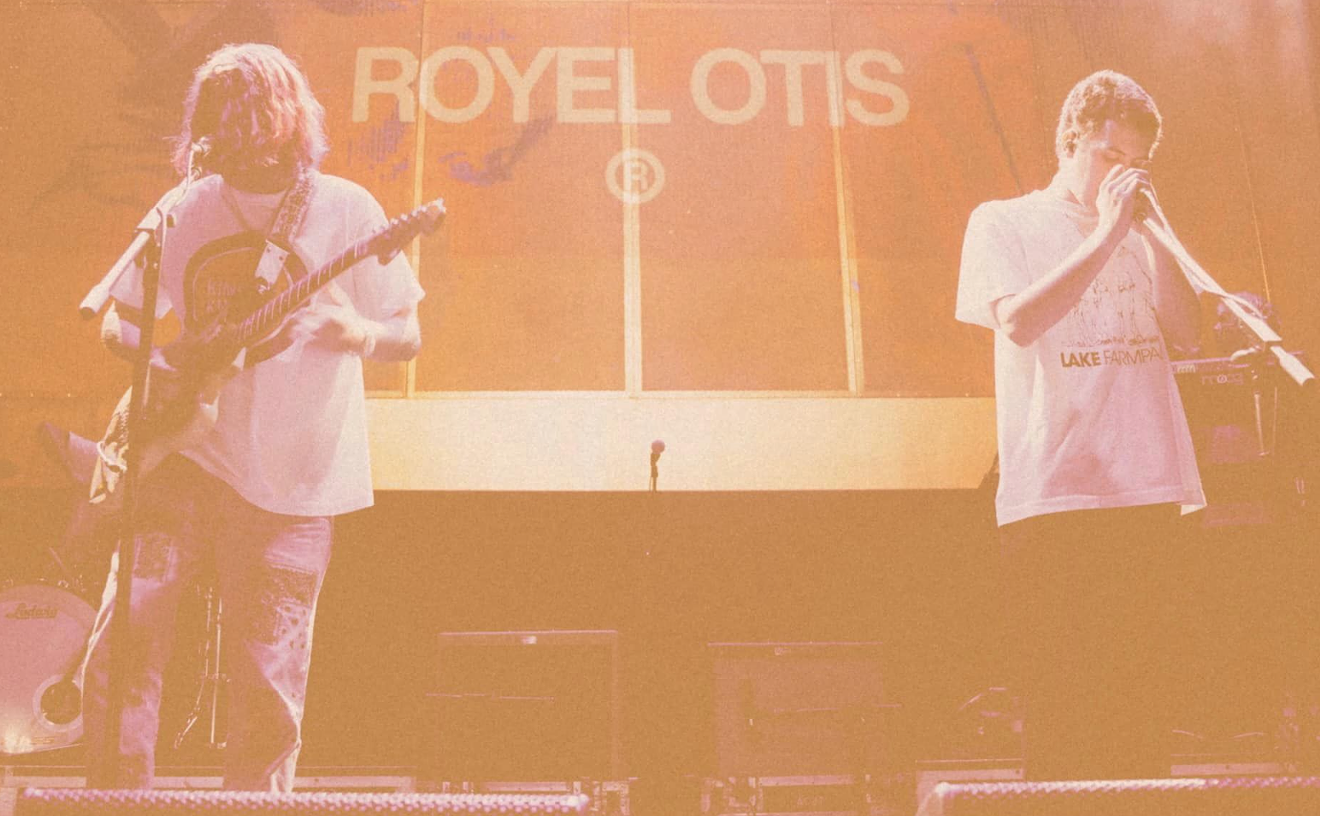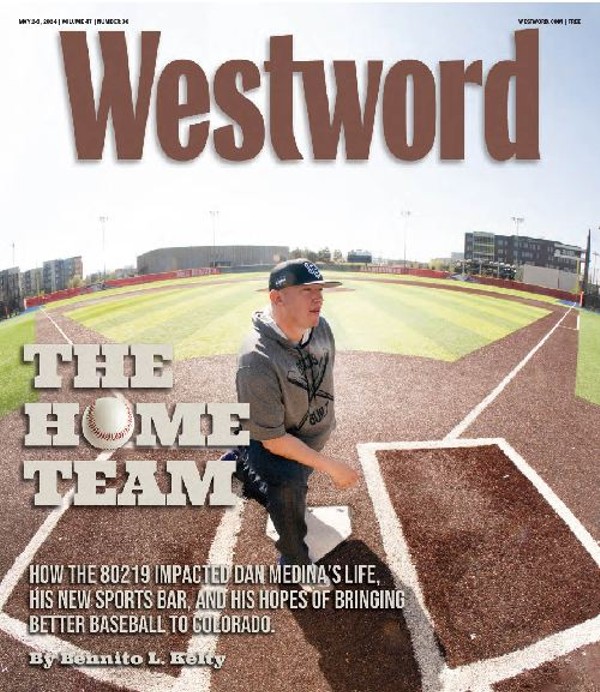A few weeks ago, I made the six-hour trek to Santa Fe to see Denver band Rubedo play at the recently opened Meow Wolf Art Complex (full disclosure: My boyfriend, Gregg Ziemba, is a founding member of Rubedo). As a sort of sister city to Denver, Santa Fe has long been a great place to see and play shows. After driving through the often arduous but beautiful Southwestern wasteland, Meow Wolf is like a mirage in the desert. It seems too good to be true.
But it’s very real. Although the artist collective behind it (also called Meow Wolf) has been hard at work for a long time, the new music venue, interactive museum, maker space, artist workshop and education center opened just a few months ago, inside an old bowling alley. People, publications and arts entities outside the DIY scene have taken notice — Meow Wolf even got a write-up in the New York Times — and as a member and serious advocate of Denver’s own DIY community, I knew I had to see the venue for myself.
What struck me immediately about the space was how Meow Wolf had taken off from the world of DIY and moved into a whole new realm. It’s still DIY in nature, but with funding, city approval and art-world attention, the collective’s latest endeavor is clearly something more. DIY is an ethos and a mode of creating art and other work, but more than that, it fosters a connective feeling. It’s an avenue by which people who often feel marginalized, especially economically, can work together to create something, whether it’s art, music, a festival, an experience, a home, a venue or a political agenda. DIY (Do It Yourself) can easily become DIT (Do It Together).
Money can be a tough thing for DIYers. I’ve never been good about asking people to pay money to see or experience my art or music, and that same reticence stops many DIYers from going to the next level. It’s not that we don’t value our work, but money just seems to complicate things. It creates expectations; it can cause arguments and break up friendships and bands. Many of us working in the world of DIY don’t have or make a lot of money, and we assume that everyone involved in DIY is the same level of broke. When we put on shows and festivals, or create installations and other types of exhibitions in our chosen venues, revenue tends to be generated solely from what is collected at the door — and that itself is often donation-based. In short, DIY, historically, is not profitable. It’s usually not meant to be profitable — but that tenet can hinder its broader success.
So what if DIY was to become more stable and sustainable? I thought about this a lot as I wandered through Meow Wolf’s glittery, pulsing, very sturdy and professional-looking walls. Though a lack of stability is part of DIY’s inherently transient nature — in general, most DIY venues and spaces, however beloved, aren’t created to last forever — there is something to be said for the opportunities that money provides.
Meow Wolf the collective has been creating immersive art experiences for close to a decade. Its current, permanent home in this converted bowling alley is like looking into the possible future of DIY — or maybe just the next step. The biggest difference between this space and other, ethos-aligning and aesthetically similar DIY institutions around the country? Meow Wolf has money behind it.
A friend of mine, journalist, artist, musician and DIY organizer Marisa Demarco, once said that one of the most radical acts you can commit in this world is to give money to an artist. One foot inside Meow Wolf’s doors and it’s clear: Money can help great art come alive. I’m not talking about the deadened consumerism of mall culture or even a modern art museum with wads of money shoved up its nose from donors who live for the cachet of art-driven philanthropy. I mean that Meow Wolf is what happens when money is put directly into the hands of people who want to create art.
The Meow Wolf Art Complex and its centerpiece, House of Eternal Return, an immersive art experience, came to be after years of hard work; the collective created many installations in Santa Fe and across the country before taking on this permanent project at home. And once fundraising efforts for the venue began in earnest, Meow Wolf members found themselves in the midst of a wonderful and strange celestial alignment. After many long conversations and lots of show-and-tell from the group, science-fiction author and entertainment behemoth George R. R. Martin, a longtime supporter of the arts who has lived in Santa Fe since 1979, agreed to purchase the empty bowling alley that would become Meow Wolf’s home, as well as donate several million dollars to the realization of the House exhibition. Meow Wolf member Vince Kadlubek detailed how it all came about in a 2015 article in the Guardian. Meow Wolf also found another unlikely advocate in Javier Gonzalez, the mayor of Santa Fe, who saw the potential in the complex and the artists behind it.
Alternate reality, acid trip without the acid, science-fiction movie set, Alice in Wonderland dreamscape, Disneyland for weirdos, an abandoned set of a Nickelodeon game show back when cable was still in its experimental stage — Meow Wolf is all of these things, but without cliché or familiarity. It looks and feels like what it is: the work of more than a hundred individual DIY artists’ own visions cohesively melded together. Inside the bowling alley are dozens of interconnected otherworldly portals, all living behind the façade of a life-sized Victorian house, which was created from scratch inside the building, too.
The lobby and learning spaces on the periphery of the permanent House exhibition are reminiscent of a laser-tag arena from the early ’90s. There’s wacky suburban-fun-center carpeting with flecks of wild colors, along with neon signage and places to buy snacks and other things. The interactive museum also has some newly vintage elements: a forest of neon-painted trees that glow in black light; rooms that look and feel like you’re walking into a video game; even spaces meant to evoke the enticing futurism that virtual reality could one day offer. It’s like walking on the surface of another planet while simultaneously traversing the Internet circa 1998.
It’s a house, but also a fort; it has bridges that lead from geodesic-dome rooms covered in eyeballs to normal-looking children’s bedrooms. It’s a museum for exploring and an adult-sized play place. But for the adventurous, Meow Wolf also has a mystery woven into its world; the staff will gladly fill you in on the tale of the fictional Selig family, whose members seem to have suddenly disappeared from the space. It’s up to you to solve the mystery using the hundreds of clues hidden throughout.
The true centerpiece of the complex is the indoor stage. At its core, Meow Wolf is a functioning art project, museum and learning space, but one of the main draws is its music venue. The performance space is what makes Meow Wolf feel familiar to anyone who has visited, played or lived inside of a DIY venue. There’s a certain aesthetic that all of these spaces share: Repurposed and repainted found objects become art pieces that become part of living spaces that become part of the venues — and it’s all open to the public.
Though no one lives at Meow Wolf, it is the sister venue/collective/ethos-carrier to many similar spaces across the country, including Denver’s own Rhinoceropolis. The dozens of artists invested in the space make it part of this DIY network.
Denver’s DIY music community has always had a special connection to Santa Fe. Though it often feels like we’re an island in the middle of the plains, cities that are similarly geographically isolated have always offered a warm welcome to traveling bands and artists. The feeling of being alone in our own little DIY worlds fosters a unique camaraderie. Whether it’s Santa Fe and Albuquerque, Phoenix and Flagstaff, Provo and Salt Lake City, artists willing to traverse these regions know that the long drives between our boxy states are worth it for the great shows at cool venues booked and operated by kind people.
Creating a permanent home for Meow Wolf may have taken the collective to a new level of DIY operation, because the venue is profitable. According to a financial breakdown from local paper the Santa Fe New Mexican, since opening in mid-March of this year, the Meow Wolf Art Complex has seen 100,000 visitors come through its doors and reached a gross revenue of just over a million dollars, exceeding the collective’s goals for the year. Again, because of geography, Meow Wolf is an integral part of the DIY touring circuit for musicians. It puts on shows featuring local bands and artists and is able to pay musicians well. Seeing an art collective become profitable while staying true to the DIY ethos and aesthetic fulfills the other key role that art hubs across the country play in this interconnected web: It inspires other artists and musicians to go bigger and try harder.
DIY venues and art spaces are typically hidden away in warehouses, abandoned buildings, basements and boarded-up storefronts. Generally operating on no budget and with no proper licensing, they attempt to stay under the radar of neighbors, sometimes landlords and always city officials. Meow Wolf took the opposite approach and worked aboveground, which allowed it to connect with the larger art world and gain support from the city.
As Denver grows, it gets more expensive. We’re experiencing a loss of affordable spaces in which art can occur both in the open and covertly. But what if the city backed more experimental art and music spaces, as Santa Fe chose to do with Meow Wolf? What if money was given to the people who currently run and invest hundreds of hours in our DIY spaces? Every city can’t have a benefactor like George R. R. Martin, but there is plenty of money being poured into new construction all around our crumbling experimental-art hubs. It’s not too late to take a cue from Meow Wolf and find a way to put money directly in the hands of artists, putting them in charge of creating and sustaining the art and art spaces that make Denver worth living in.
Be my voyeur (or better yet, let me stalk you) on Twitter: @cocodavies
[
{
"name": "Air - MediumRectangle - Inline Content - Mobile Display Size",
"component": "12017618",
"insertPoint": "2",
"requiredCountToDisplay": "2"
},{
"name": "Editor Picks",
"component": "17242653",
"insertPoint": "4",
"requiredCountToDisplay": "1"
},{
"name": "Inline Links",
"component": "18838239",
"insertPoint": "8th",
"startingPoint": 8,
"requiredCountToDisplay": "7",
"maxInsertions": 25
},{
"name": "Air - MediumRectangle - Combo - Inline Content",
"component": "17261320",
"insertPoint": "8th",
"startingPoint": 8,
"requiredCountToDisplay": "7",
"maxInsertions": 25
},{
"name": "Inline Links",
"component": "18838239",
"insertPoint": "8th",
"startingPoint": 12,
"requiredCountToDisplay": "11",
"maxInsertions": 25
},{
"name": "Air - Leaderboard Tower - Combo - Inline Content",
"component": "17261321",
"insertPoint": "8th",
"startingPoint": 12,
"requiredCountToDisplay": "11",
"maxInsertions": 25
}
]


